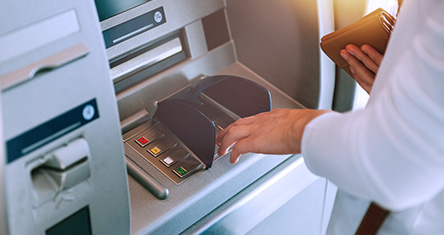The skinny on card skimming
Have you heard of skimming? It happens when devices are illegally installed on ATMs, point of sale terminals, or fuel pumps to capture cardholders’ data and PINs. That data is then used by criminals to print fake debit or credit cards and steal from victims’ accounts.
Skimming costs consumers and financial institutions more than $1 billion every year. Here’s what you need to know to protect yourself:
- Inspect ATMs, point-of-sale terminals, and other card readers before using. Look for anything loose, crooked, damaged, or scratched. Don't use a card reader if you notice anything unusual.
- Pull at the edges of the keypad before entering your PIN. Then, cover the keypad when you enter your PIN to prevent cameras from recording your entry
- Use debit and credit cards with chip technology. In the U.S., stealing chip data is much less common than stealing magnetic strip data.
- Contact your financial institution if the ATM doesn't return your card after you end or cancel a transaction.
- Paying inside of a business can help you bypass a skimmer all together.
If you do suspect you’ve been a victim of a skimmer:
- Call us. We can help you out with what steps to take next.
- If you notice card fraud, contact your issuer right away to limit your liability and cut off card access.
- Alert the business where you believe the card skimming occurred so a manager can check the reader and prevent additional theft.
Some key takeaways to keep yourself and information safe:
- Credit card skimmers are a way for fraudsters to steal your financial information.
- They might not be easy to identify but knowing what to look for can help.
- Checking your card transactions regularly can help you spot suspicious activity.
- If you notice suspicious activity, call your card issuer immediately.
Vigilance is the best protection when it comes to financial criminals.


